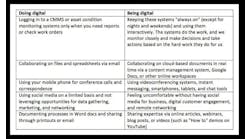By Keith Larson, Smart Industry editor in chief
When Marc Andreessen penned his now seminal essay “Why software is eating the world” way back in 2011, he noted the many business and industries that already were being run on software and delivered as online services. From Netflix and Amazon to Uber and Airbnb, he cited entrepreneurial technology companies that were invading and overturning established industry structures from the outside in.
That trend, of course, has continued and intensified in many arenas of human endeavor. But “Industry with a capital I” as I sometimes call it—manufacturing, processing, energy and their other heavy industry brethren—has so far proved resistant to disruption from the outside in.
Sure, a number pure-tech plays have emerged to offer specialized software tools for, say, IIoT device management or time-series analytics, and Industry leverages that same general-purpose cloud infrastructure that supports other digital plays, but it’s largely companies that grew up in the industrial space that are driving the equipment-specific or ecosystem solutions needed to drive transformation. Andreessen predicted this, conceding that for markets with a “heavy real-world component such as oil and gas,” the software revolution would be primarily an opportunity for incumbents.
Software and connectivity are indeed revolutionizing Industry, but they’re doing so from the inside out. The latest generation of industrial machines and equipment may include mechanical and electrical advances, but more and more often it’s the intelligence packaged as software and visibility delivered through connectivity and integration with complementary sources of intel that truly differentiate these machines from previous generations of systems—and from those of competitors. And because so much of Industry relies on legacy capital equipment, it also falls to frontline engineers, technicians, IT systems analysts and other Industrial decision makers to strategically retrofit and upgrade their own assets in order to take advantage of digital technology’s new capabilities.
In this issue’s cover story (p19), we report the results of our fifth annual Digital Transformation: State of the Initiative study. The results of this year’s survey of more than 650 industry professionals indicate that the overwhelming majority believe digitalization will have a profound impact on their organizations’ operations. Further, respondents indicate that digital technologies only recently considered bleeding edge—from augmented reality to blockchain—are already in use or are being actively piloted within a majority of respondents’ organizations.
Industry may, for the most part, be safe from entrepreneurial disruption from without. But for any given organization, a competitor down the road that embraces digitalization first is a different story altogether.

